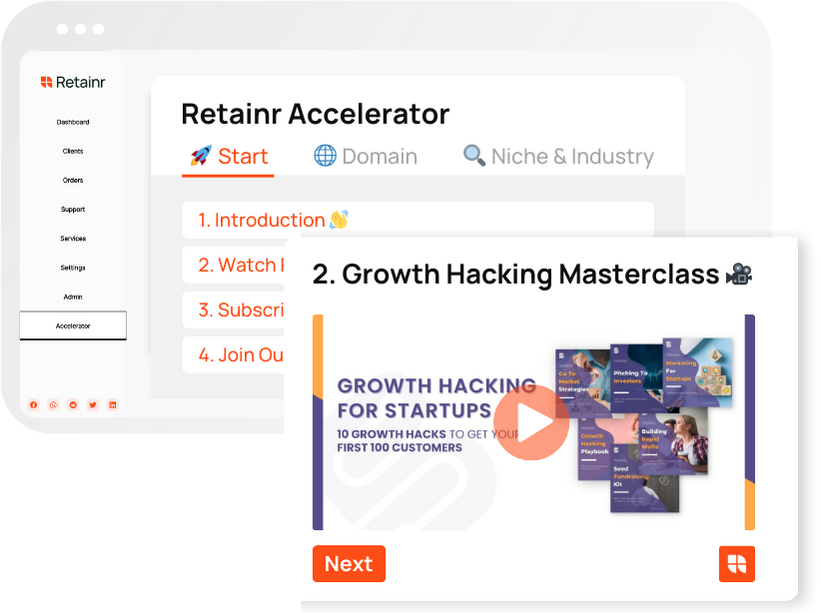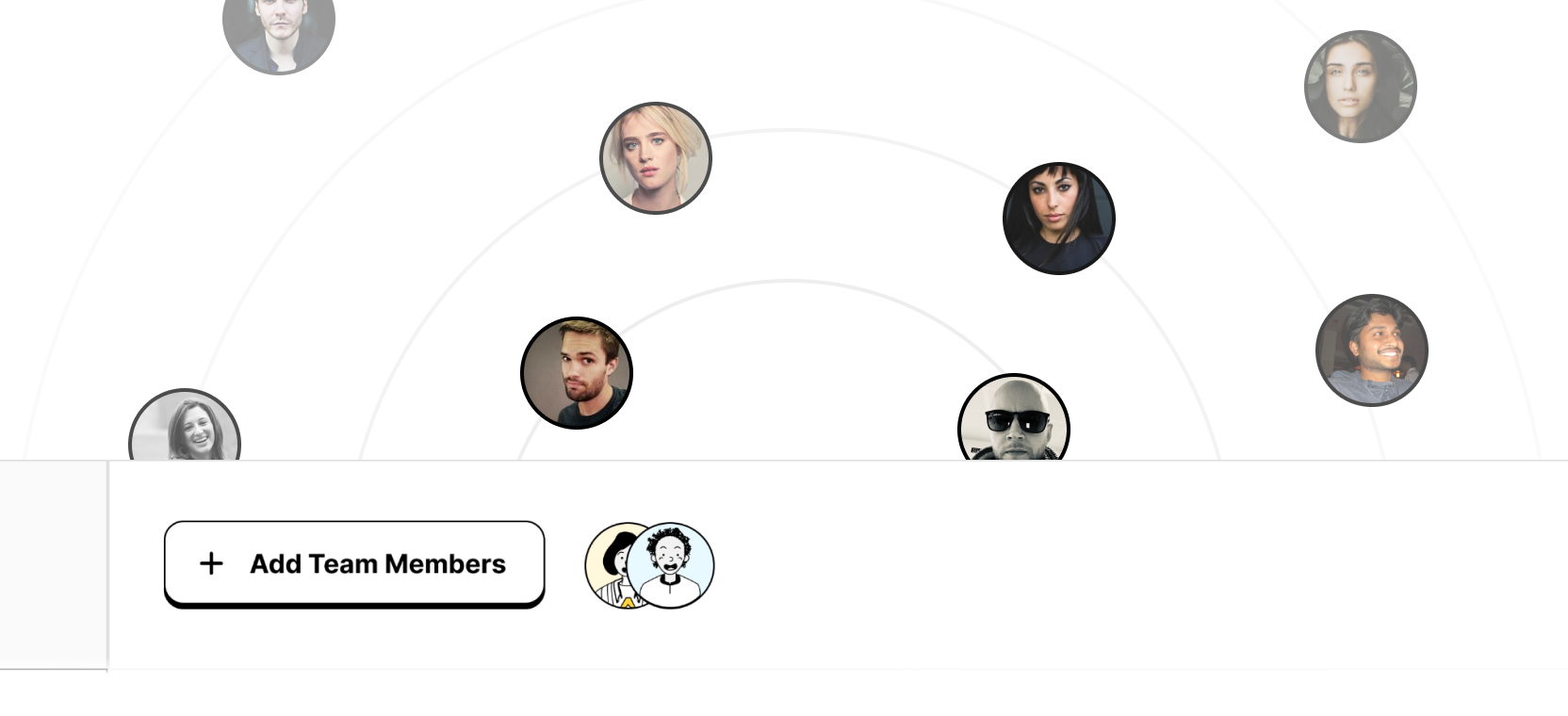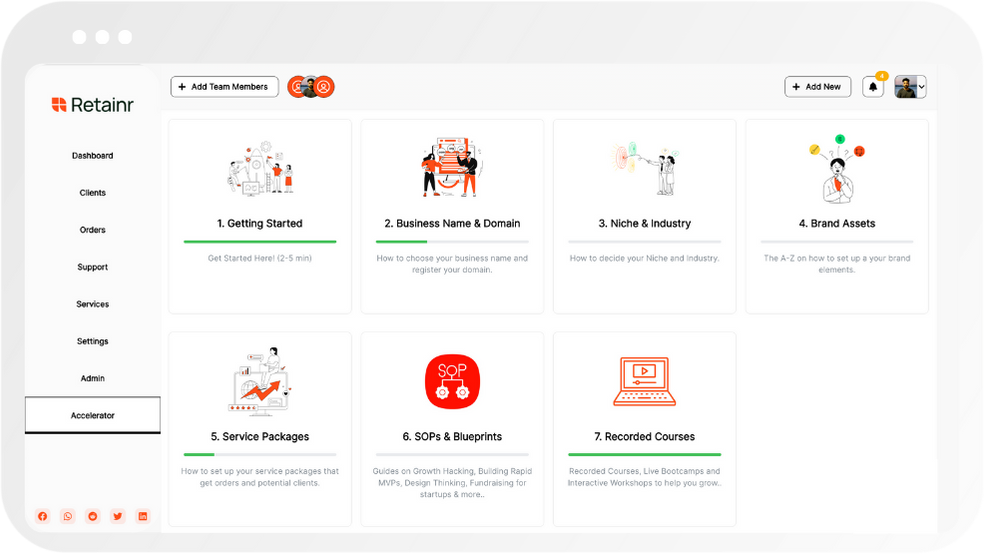
7 Best Practices for Successful Project Management in Small Agencies
Build with Retainr
Sell your products and services, manage clients, orders, payments, automate your client onboarding and management with your own branded web application.
Get Started1. What are the 7 best practices for successful project management in small agencies?
1. Clear Communication and Collaboration
Effective project management in small agencies often hinges on clear communication and collaboration. All team members should have a solid understanding of their roles and responsibilities, as well as the overall project objectives. Regular team meetings, status updates, and collaborative project management tools can all enhance communication and collaboration. It is also crucial to encourage open and honest feedback at all stages of the project.
- Regular team meetings
- Clear definition of roles and responsibilities
- Use of collaborative tools
- Encouragement of feedback
2. Well-Defined Goals and Objectives
Before a project can be successfully managed, its goals and objectives must be clearly defined. These should be SMART - Specific, Measurable, Achievable, Relevant, and Time-bound. Small agencies can benefit from setting project milestones and breaking down larger goals into smaller, actionable items. This process can also provide team members with a clear roadmap to follow throughout the project.
| SMART Goals |
|---|
| Specific |
| Measurable |
| Achievable |
| Relevant |
| Time-bound |
3. Efficient Resource Management
A key aspect of successful project management involves efficient resource management. Small agencies, in particular, must be good at allocating their limited resources appropriately to achieve project goals. This can include time, budget, equipment, and human resources. Prioritizing tasks and using project management tools can help track resources and ensure they're being used as efficiently as possible.
- Time management
- Budget allocation
- Equipment utilization
- Human resources allocation
2. How could a small agency implement these best practices for project management?
Implementing Project Management Best Practices in Small Agencies
Implementing best practices for project management in small agencies starts with setting clear objectives for every project. Defining the project scope, timeline, and deliverables from the onset will give the entire team a clear understanding of what is expected. Even the seemingly minor tasks should be defined and communicated to everyone involved. Aligning the project goals with that of the agency also ensures that the project is beneficial to the organization as a whole.
- Use project management tools: Agencies should invest in appropriate project management tools adapted to their operations and size. These tools greatly aid in scheduling, communication, tracking progress, and managing resources and risks.
- Effective communication: Open, honest, and regular communication among team members is crucial. This can prevent and resolve misunderstandings and conflicts, boosting the overall project outcome.
- Risk management: Potential risks should be identified, analyzed, and addressed promptly. Having a risk management strategy in place ensures the project stays on track even in the face of uncertainties.
Moreover, it is essential for small agencies to capitalize on their strengths. Unlike larger agencies with a broad range of skills, small agencies often have a focused area of expertise. They can use this to their advantage, providing services that larger agencies may overlook. Lastly, continuous improvement and learning should be a central part of the agency's culture. This could mean providing training opportunities for staff members, implementing regular performance reviews, or even courting feedback from clients.
| Best Practices | Implementation Strategies |
|---|---|
| Clear Objectives | Define project scope, timeline, and deliverables |
| Use of Project Management Tools | Invest in appropriate tools for scheduling and communication |
| Effective Communication | Ensure open, honest, and regular communication among team members |
| Risk Management | Identify, analyze and address potential risks promptly |
| Continuous Improvement and Learning | Provide training, implement performance reviews, get feedback from clients |
3. Can you provide examples of how each of these best practices can enhance project management?
Apply Specific Goals and Objectives
When you clearly define the project’s objectives and goals, it provides a roadmap for everyone involved in the project. For instance, if a small geek squad company sets a goal to fix at least 200 computers in their first quarter, it streamlines the tasks and guides the team in their decision-making processes. This practice not only sets the end vision but also organizes the path towards the accomplishment of these objectives. In particular, it:
- Sets clear expectations for the team members.
- Assists in creating a detailed project plan, outlining tasks, and crucial project milestones.
- Helps to set performance metrics to evaluate success.
Regular Communication
Effective communication is critical in project management where each team member needs a clear understanding of their roles and responsibilities. For example, a small social media agency working on a brand's marketing strategy will benefit from regular check-ins and meetings to stay aligned and update on progress. This practice:
| Advantages |
|---|
| Ensures everyone is on the same page, reducing confusion and errors. |
| Helps promptly address issues and provide solutions. |
| Promotes collaboration and team engagement towards project goals. |
Risk Mitigation
Every project carries certain risks. Identifying these risks ahead of time can save the project’s time and resources significantly. To illustrate, a small IT agency working on a software development project will benefit by identifying potential risks like technical glitches, dependency on singular expertise, or stringent timelines. A considered risk mitigation strategy:
- Prevents crisis situations by addressing risks in the planning phase.
- Saves time and resources by having an action plan in case the identified risks occur.
- Increases stakeholder confidence in the project management process.
4. Why are these 7 practices considered critical for the success of project management in small agencies?
Understanding the Criticality of Project Management Best Practices
Project management in small agencies can be a daunting task, as it involves coordinating numerous aspects from planning and executing to monitoring and controlling the project objectives. To help small agencies overcome this challenge, seven universal best practices had been identified, each with its strategic capacity to ensure successful project management outcomes.
The Importance of The Seven Best Practices
Every practice in the list of seven holds a unique significance:
- Consistent Communication: Fosters transparency, helps to set clear expectations, and keeps every stakeholder well-informed about the project developments.
- Detailed Planning: Helps anticipate potential obstacles and allocates resources efficiently.
- Risk Management: Identifies, assesses, and prioritizes risks and develops strategies to manage them.
- Defined Roles and Responsibilities: Ensures each team member knows what is expected of them, thereby preventing confusion and overlapping tasks.
- Effective Time Management: Prioritizes tasks, avoids procrastination, ensures strict adherence to project timelines.
- Quality Control: Constant monitoring of processes and results helps produce high-quality outcomes that meet client satisfaction.
- Regular Reviews: Enables the team to learn from past challenges, improve future processes and celebrate successes.
Analyzing the Table of Best Practices
Here's a table that further elaborates the critical importance of these best practices in relation to three core components - tasks, challenges, and solutions:
| Best Practices | Tasks | Challenges | Solutions |
|---|---|---|---|
| Consistent communication | Daily meetings, Updates to stakeholders | Misinterpreted messages, Lack of transparency | Open communication channels, Regular updates |
| Detailed planning | Task scheduling, Resource allocation | Resource overlaps, Under/Over estimations | GANTT/PERT charts, Accurate estimations |
By adopting and effectively implementing these best practices, small agencies can navigate the realm of project management successfully, achieving their key project objectives and maximizing their results.
5. How do these 7 best practices for successful project management differ in a small agency compared to a larger organization?
Differences in Best Practices for Project Management in Small Vs Large Agencies
The 7 best practices for successful project management can be implemented in both small agencies and larger corporations. However, the manner in which these practices are used, and the ease of implementation, can differ significantly between the two due to structural, resource, and communication differences.
Structural Differences
- Leadership engagement: In small agencies, engaging leadership in project management can be much easier and frequent due to a less hierarchical structure. In contrast, larger corporations may find it challenging to involve top-tier management in every project.
- Cross-functional collaboration: With fewer departments, small agencies can find cross-functional cooperation much easier. Large companies often face greater challenges in breaking down silos and fostering collaboration between different departments.
Resource and Communication Differences
| Small Agencies | Larger Organizations | |
|---|---|---|
| Resource allocation: | With fewer resources, small agencies need to be strategic and often more conservative in utilizing resources. | Larger companies typically have more resources at their disposal and may have specialized teams handling resource allocation. |
| Communication: | In small teams, communication can be more straightforward and efficient, making it easier to keep everyone on the same page. | In larger organizations, information can sometimes get lost in transit. Multiple layers of management may slow communication, making project coordination more challenging. |
6. What tools, software, or resources are recommended for these 7 best practices in project management?
Recommended Tools and Software for Project Management
Efficient project management in small agencies requires leveraging the right tools and software applications to streamline operations, foster team collaboration, and optimize workflow. These tools, software, and resources can be categorized into project management systems, communication tools, and resource management software. Project management systems such as Asana, Trello, and Jira offer features for task assignment, progress tracking, and organization. Communication tools like Slack and Microsoft Teams facilitate seamless interaction between team members, while resource management software like Float and Resource Guru help in overseeing the utilization of resources within a project.
Comparison of Different Project Management Software
| Software | Key Features | Best Suited For |
|---|---|---|
| Asana | Task assignments, progress tracking, and file attachments | Small teams needing a simple project management tool |
| Slack | Instant messaging, file sharing, and status updates | Teams requiring quick and efficient communication |
| Resource Guru | Scheduling, resource allocation, and leave management | Agencies needing a robust resource management tool |
Importance of Selecting the Right Tools
Choosing the right project management tools, software, or resources can significantly contribute to achieving robust project management practices. The right tool not only enhances efficiency but also improves team collaboration, streamlines processes, and saves time and resources within the agency. Therefore, to ensure the successful execution of project management practices, agencies should carefully consider their specific needs, budget, and capabilities before deciding on the appropriate tool or software.
7. Can these 7 best practices be adapted for different types of projects within a small agency?
Adaptability of 7 Best Practices for Different Types of Projects
These seven best practices are exceptionally adaptive, and they can be effectively tailored to suit different types of projects within a small agency. Given their general nature, they offer tremendous flexibility in terms of implementation across unique projects with diverse scope, team size, and resources, among other variables.
Strategical Customization as Per Project Needs
- Clear Objectives and Scope: Regardless of the project, setting clear goals and defining the scope is universally applicable. Every project needs a direction, and this step provides that.
- Proper Planning: Projects of all sizes require proper planning. The scale of planning may vary, but this step ensures those involved know precisely what is to happen and when.
- Open Communication: For all types of projects, consistent and transparent communication is crucial for ensuring everyone is on the same page and to quickly address issues.
- Risk Management: Different projects carry unique risks. Hence, risk management becomes a fundamental practice adaptable to any project.
- Regular Reviews: Regardless of the project's nature, it is pivotal to conduct reviews regularly to ensure the project is on track.
- Task Delegation: The nature of tasks varies from project to project, but effective delegation remains a crucial management practice.
- Employ Proper Software: Even though the software can vary based on a project's needs, utilizing the right tools makes the project run more efficiently.
A Comparative Analysis Table
| Best Practice | Adaptability |
|---|---|
| Clear Objectives and Scope | Highly adaptable to align with project goals |
| Proper Planning | Varying scales of planning needed but completely customizable |
| Open Communication | A universal requirement for project management |
| Risk Management | Flexibility to consider unique project risks |
| Regular Reviews | Applicable and adjustable for all project timelines |
| Task Delegation | Standard practice applicable to diverse project tasks |
| Employ Proper Software | Needs alter as per project requirements but always beneficial |
8. How can these 7 best practices improve communication and collaboration within the project team?
Improvement in Communication and Collaboration with Best Practices
Implementing the 7 best practices in project management can significantly enhance both communication and collaboration within small agency project teams. This comes from creating clear networks of communication, establishing roles and responsibilities, frequent reporting and using team collaboration tools. Ensuring everyone is on the same page and heading towards the same goal fosters not only productivity but also trust among team members.
Impacts of Best Practices on Communication
- Clear Objectives: With clear project objectives, team members understand what they need to accomplish. This clarity reduces unnecessary communication and enables focused discussions.
- Defined Roles: When roles are clear, everyone knows who to go to for information, eliminating confusion and increasing efficiency in information exchange.
- Regular Reporting: Regular progress reporting ensures consistent communication and enables issues to be flagged and dealt with promptly.
| Best Practice | Impact on Communication |
|---|---|
| Clear Objectives | Focuses discussion and reduces unnecessary communication |
| Defined Roles | Improves efficiency in information exchange |
| Regular Reporting | Promotes consistent communication and issue flagging |
Enhancing Collaboration through Best Practices
These best practices also encourage active collaboration within the team. A common understanding of goals, responsibilities, and progress fosters an environment for team members to actively work together. Using collaboration tools can also be an excellent practice to stay connected and facilitate teamwork.
- Shared Goals: By working towards common objectives, team members naturally collaborate and support each other to meet these goals.
- Team Culture: A culture that encourages collaboration will see team members sharing ideas, challenges, solutions and learning from each other.
- Collaboration Tools: Use of project management and collaboration tools, like Asana, Trello, or Slack can centralize project information and promote collaboration.
| Best Practice | Impact on Collaboration |
|---|---|
| Shared Goals | Promotes teamwork and mutual support |
| Team Culture | Encourages exchange of ideas and learning |
| Collaboration Tools | Centralizes project information and promotes collaboration |
9. What are the potential challenges or obstacles when implementing these 7 best practices in a small agency?
Potential Challenges of Implementing Best Practices
Implementing best practices for successful project management within small agencies could potentially face certain challenges due to resource constraints, lack of specialist knowledge, and resistance to change. Understanding these obstacles can prompt managers to preemptively address them, thereby increasing the likelihood of successful implementation.
- Resource Constraints: Small agencies may lack the necessary resources to fully implement best practices. This could range from financial constraints preventing the purchase of project management software, to staffing constraints affecting the ability to delegate tasks.
- Lack of Specialist Knowledge: Small agencies may not have a project management specialist on their team. This lack of expertise can result in challenges when trying to implement industry standards, making training and development essential.
- Resistance to Change: Even with proper resources and knowledge, resistance to change can pose a challenge. Employees may prefer existing methods and resist the transition to new practices.
Overcoming Challenges
A careful approach can potentially overcome these challenges. Resource allocation should be carefully planned and necessitate the buy-in from all stakeholders. Regarding specialist knowledge, targeted training can be provided to key personnel. Furthermore, changes need to be carefully managed and communicated to overcome resistance.
| Challenge | Proposed Solutions |
|---|---|
| Resource Constraints | Effective planning, budget control, efficient resource allocation |
| Lack of Specialist Knowledge | Professional development, specialist training, utilize external consultants |
| Resistance to Change | Effective communication, promoting staff engagement, offering support and training |
10. How can the success of these 7 best practices in project management be measured or evaluated in a small agency?
Evaluating the Overall Project Performance
Success in project management can be measured and evaluated through various assessment tools and strategies. A comprehensive way to assess the implementation of the 7 best practices in project management is to look at the overall project performance. This involves evaluating aspects such as project completion according to schedule, meeting the set budget, and the quality of the end result.
- Schedule Performance Index (SPI): Evaluates whether the project is ahead or behind the set schedule.
- Cost Performance Index (CPI): Assesses if the project is over or under the budget constraints.
- Quality Metrics: Evaluates the functionality and performance of the end product or service.
Client Satisfaction Survey
Feedback from clients can also provide valuable insights into the efficiency of your project management practices. A satisfied client is often an indicator of a successfully implemented project. It's advisable to use a standardized client satisfaction survey, which can assist in quantifying client feedback.
| Client Satisfaction Criteria | Rating (1-5) |
|---|---|
| Quality of the end product | |
| Meeting of deadlines | |
| Communication and responsiveness |
Use of Project Management Software Analytics
Modern project management software comes equipped with robust reporting capabilities. They can provide graphical representations and real-time updates on every key performance indicator imaginable for a project. By taking advantage of these, small agencies can measure the success of implementing the 7 best practices in project management.
Conclusion
Successful Project Management in Small Agencies
Successful project management is crucial for small agencies to deliver projects on time, within-budget, and to the satisfaction of clients. Here are 7 best practices to help achieve successful project management:1. Define Clear Goals: Clearly stating the project's objectives and expected outcomes paves the way to its success.2. Allocate Resources Efficiently: Accurate allocation of resources can drastically improve project timelines and reduce costs.3. Effective Communication: Open, consistent communication across the team and stakeholders is crucial.4. Risk Management: It's essential to foresee potential risks and devise proper action plans for mitigating them.5. Deadline Management: Strict adherence to deadlines is key to maintaining the workflow and ensuring project completion in a timely manner.6. Client Interaction: Regular and effective communication with clients allows you to gather feedback and keep them updated.7. Utilizing the Right Tools: Effective project management tools can ease out the project lifecycle making it efficient.Speaking of tools, Retainr.io is a whitelabel software solution that offers an extensive range of features customized for small agencies. This software enables agencies to sell, manage clients, orders, and payments with their own branded app, simplifying their project execution process, and saving worthful time. Upgrading your project management system with Retainr.io can improve efficiency, communication, and overall project success. Embrace these best practices and let Retainr.io assist in your journey to more successful project management. Upgrade your project management system today!Boost Your Agency Growth
with Retainr Accelerator
Uncover secrets, strategies, and exclusive blueprints to take your agency's growth to the next level — from marketing insights to effective presentations and leveraging technology.

SOPs, Cheatsheets & Blueprints
Leverage 50+ SOPs (valued over $10K) offering practical guides, scripts, tools, hacks, templates, and cheat sheets to fast-track your startup's growth.
Connect with fellow entrepreneurs, share experiences, and get expert insights within our exclusive Facebook community.
.jpg)

Join a thriving community of growth hackers. Network, collaborate, and learn from like-minded entrepreneurs on a lifelong journey to success.

Gain expertise with recorded Courses, Live Bootcamps and interactive Workshops on topics like growth hacking, copywriting, no-code funnel building, performance marketing and more, taught by seasoned coaches & industry experts.

.jpg)

.jpeg)


